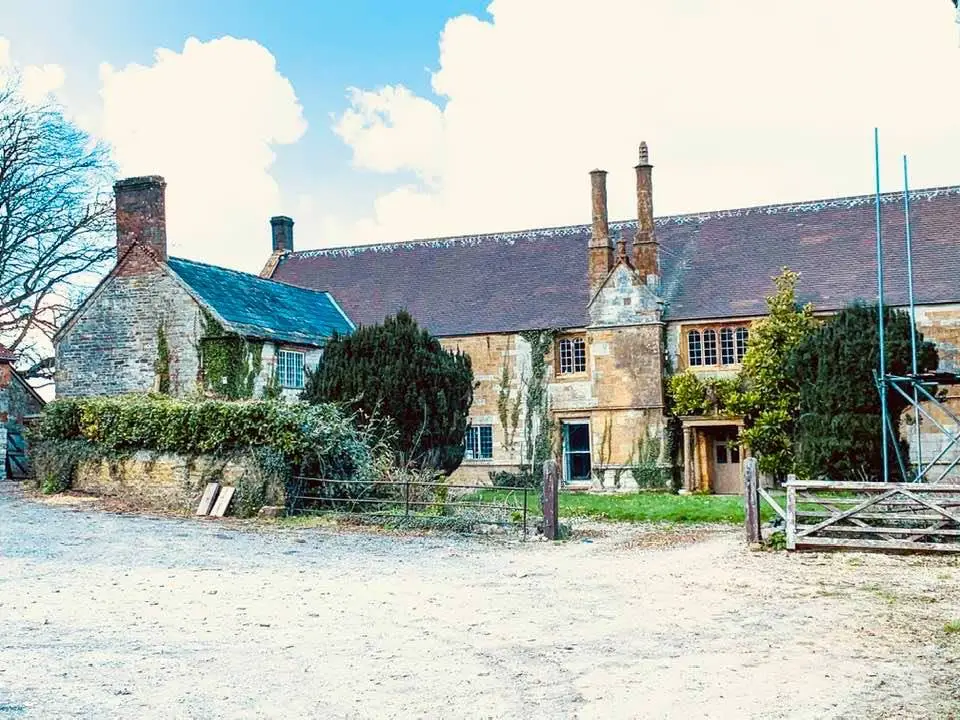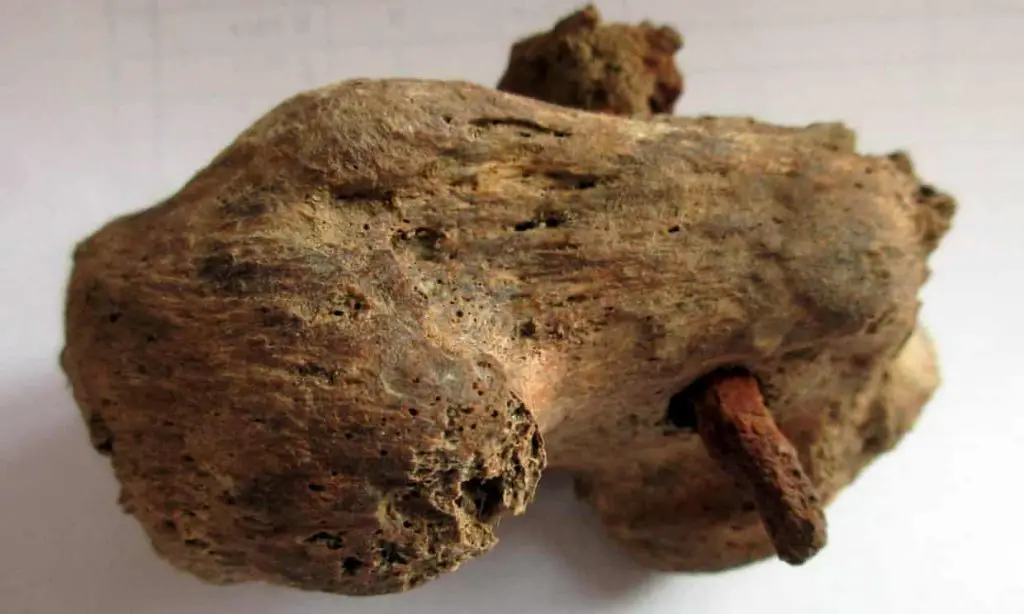In northwestern Saudi Arabia, near the town of AlUla, an archaeological site called Hegra which, like its sister city, Petra, has intricate facades for one hundred and eleven tombs built into the side of the rocks dating from 1st century BC to the 1st century AD.
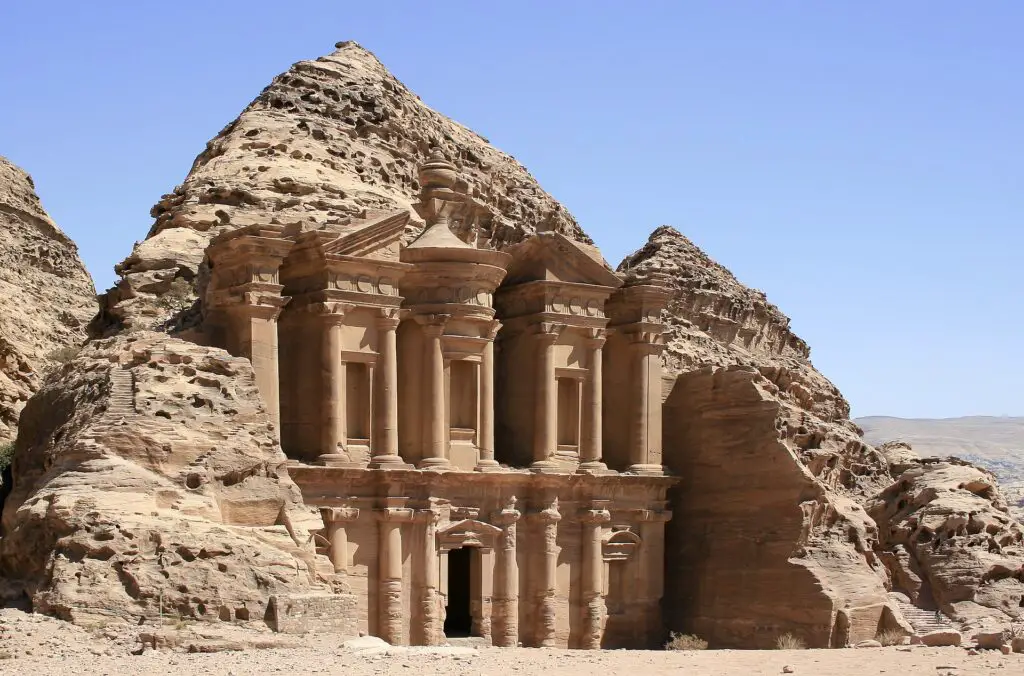
Contents
It was the work of the Nabataeans, a people almost entirely forgotten. The reddish rocks and sand were crafted with several artistic influences including Phoenician, Egyptian, Assyrian and Greek so says whc.unesco.org.
Saudi Arabia is resolute in weaning its economic dependency on its oil fields and pipelines. It has to start somewhere as oil exports currently account for 90% of its overseas trade.
There is a 20 year plan, Crown Prince Mohammed bin Salman has told the world he plans to make Saudi Arabia the crossroads, the hub for tourist that joins the land and air routes for Africa, Europe and Asia. It is a great plan that will open up some amazing history to the world.
2000 Years Old
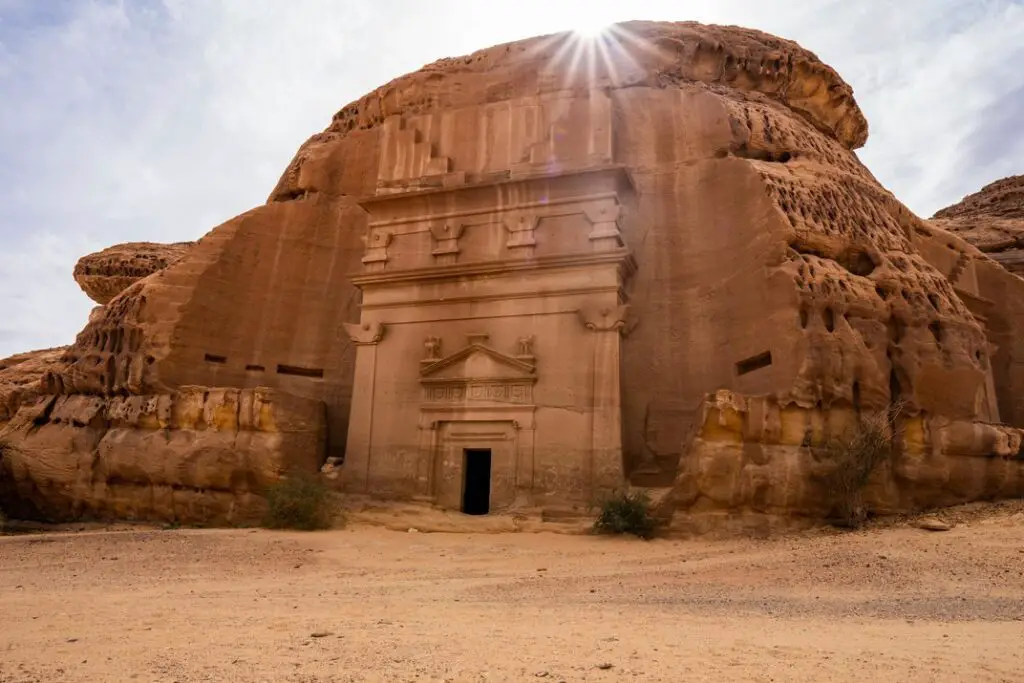
The two thousand year old site has been worked on for about forty years and has recently been opened for visitors. Tourists can also come into the country without a specific religious or business purpose.
Before this, tourists from other countries had to get permission to visit but the Saudis are beginning to realize that tourism may be much more profitable and secure than oil production but think they have a long way to go yet.
Now a twenty five dollar ticket and a bus ride will get one to Hegra where guided tours are offered in both English and Arabic.
“For a tourist going to Hegra, you need to know more than seeing the tombs and the inscriptions and then coming away without knowing who produced them and when,” it should evoke in any good tourist with any kind of intellectual curiosity: who produced these tombs? Who are the people who created Hegra? Where did they come from? How long were they here? To have the context of Hegra is very important.”
David Graf, a Nabataean specialist, archeologist and professor at the University of Miami.
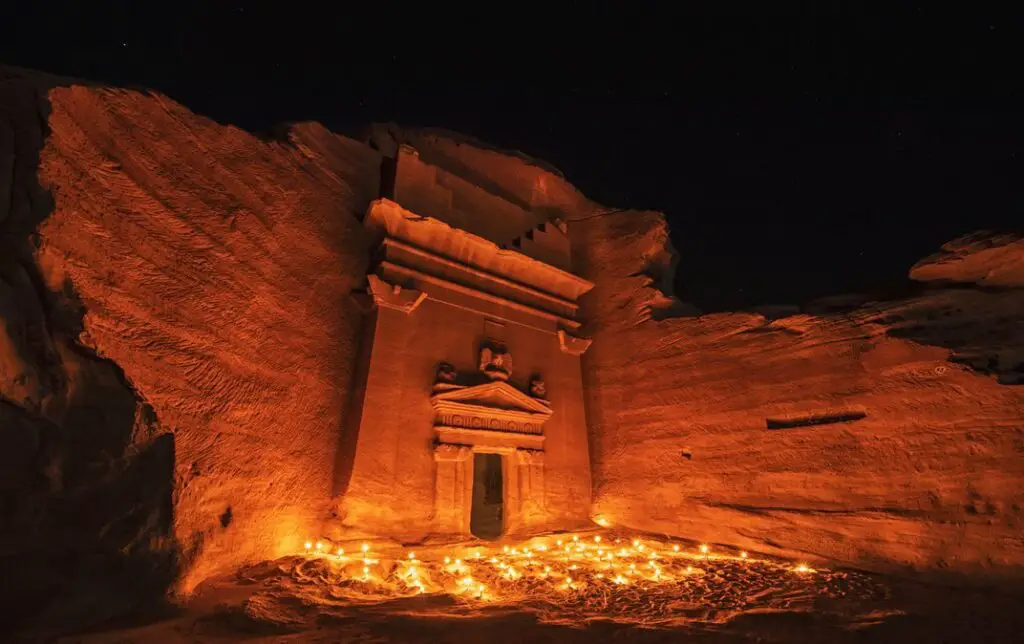
Archeologists
The tour guides have been trained by archeologists and museum guides and are usually native to the area in order to help visitors get a clear picture of the Nabataeans. A nearby town filled with mudbrick homes has also been opened.
According to smithsonianmag.com, The nearby airport has been enlarged and spruced up to accommodate the expected two million visitors. There is also an elaborate hotel in the works to be carved out of rockface by French architect Jean Nouvel which is set to open in 2024.
“Hegra is absolutely the jewel in the crown,” “However, one of the beautiful and unique things about AlUla is that it is this palimpsest of human civilization for many thousands of years. You have this near continuous spread of 7,000 years of successive civilizations that are settling in this valley—important civilizations that are just now being revealed to the world through archeology.”
Helen McGauran, curatorial manager at the Royal Commission for AlUla
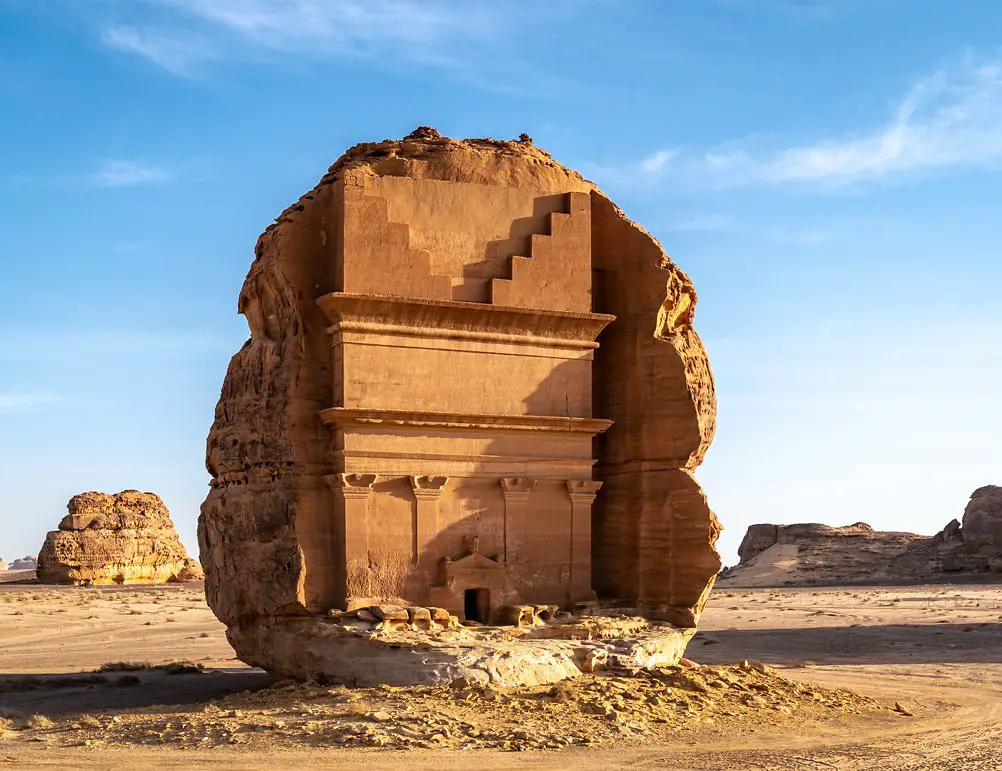
Little Known
One of the problems encountered is that the even though they had their own alphabet, Nabataeans left no written history save the inscriptions found around the tombs which warn tomb raiders with verse such as “May the lord of the world curse upon anyone who disturb this tomb or open it,” found on one of the inscriptions on Tomb 41, “…and further curse upon whoever may change the scripts on top of the tomb.”
We know little of their religious practices, their mythology and their everyday life. We do, however, know that Hegra was along the route of an important spice and incense trade that ran through Arabia and Jordan on its way to the Mediterranean area.
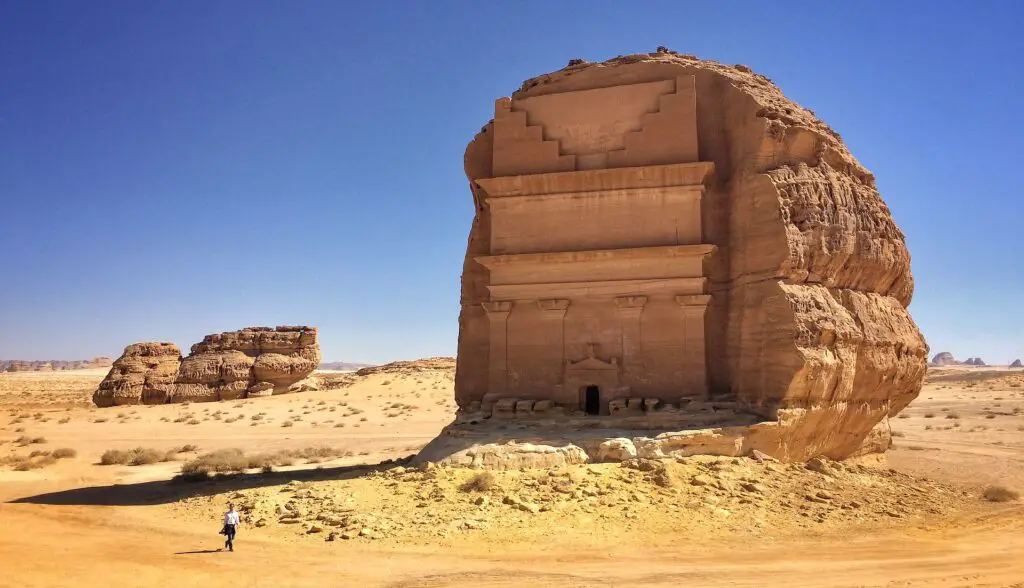
“The reason why they emerged and they became new in ancient sources is that they became wealthy, when you become wealthy, you become visible.”
Laila Nehmé, an archeologist and co-director of the Hegra Archeological Project
Success
Because of this the Nabataeans were able to become one of the most successful commercial cultures in the Middle East.
They were able to manage and conserve the precious water and built cisterns and wells. Most of our information about the Nabataean is based on early historians like Josephus, Strabo, Diodorus of Sicily and Pliny the Elder of Rome.
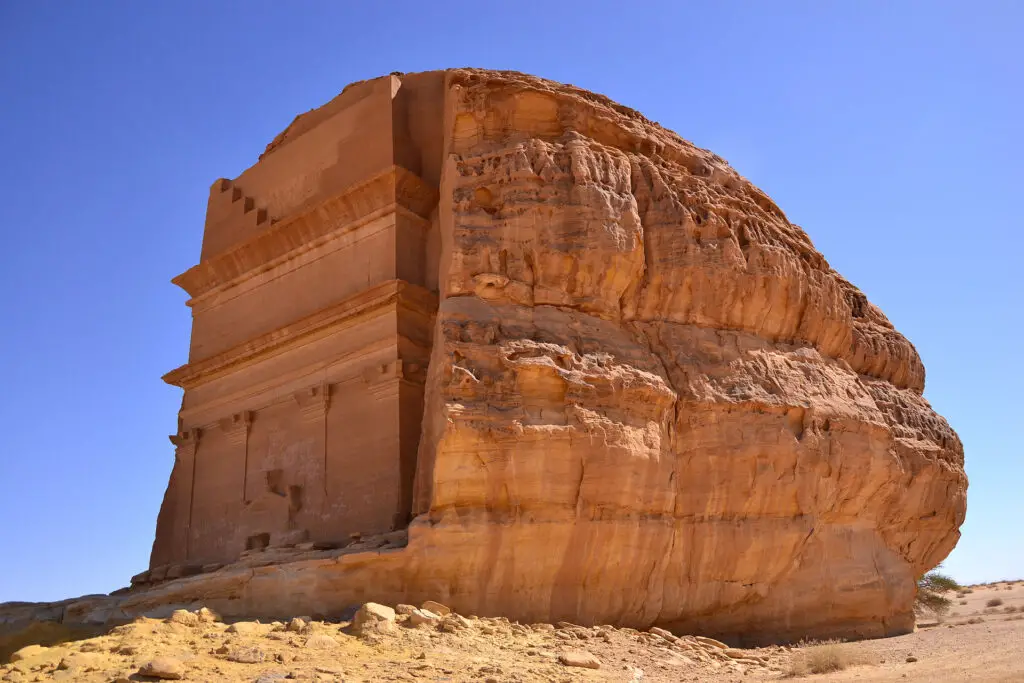
They began as nomadic tribes until the wealth they acquired kept them in one place and they began to build elegant tombs in the rockface with a blending of influences including Mesopotamian, Egyptian, Iranian, and Greek.
Some of the more common elements of design are eagles, sphinxes, griffins, a Nabataean crown, and Medusa-like heads, according to smithsonianmag.com.
Romans
During the 1st century AD, during the reign of Augustus, a Roman legion of ten thousand sailed from Egypt to a trading port of the Nabateans in the northwestern Arabian coast.
The Romans and the Nabateans enjoyed a good trading relationship until Trajan became emperor and the annexation of the Nabataean Kingdom began. Emperor Hadrian made border changes.
Eventually the Nabateans either relocated or blended in with the Romans and the Nabataean Kingdom was no more.
Another Article From Us: Roman Stadium Buried for 2000 Years
If you like this article, then please follow us on Facebook and Instagram
It was only until Petra was re-discovered by Swiss explorer Johann Ludwig Burckhardt in 1812 that the West became familiar with the Nabataeans.
If you want to see some rare and spellbinding history then Saudi Arabia welcomes you.
